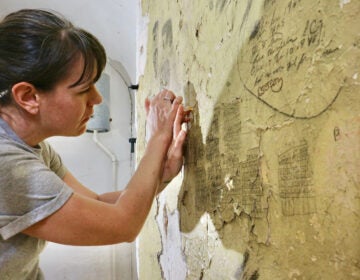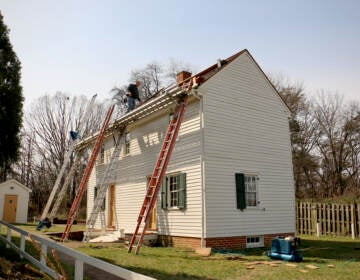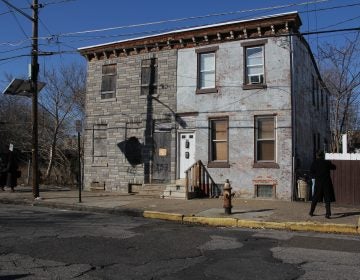Historians Fight to Preserve New Jersey’s Endangered Lifesaving Stations
A little-known but colorful slice of maritime history can still be found in a few places

A surf boat and rescuers during a drill at Cape May in about 1915. (U.S. Lifesaving Service Heritage Association)
This article originally appeared on NJ Spotlight.
–
Amid the tightly packed shore houses of Ocean City, a yellow-sided two-story building with wide porches and a tower stands on the corner of 4th Street and Atlantic Avenue, about a block-and-a-half from the ocean.
It’s Lifesaving Station 30, a meticulously restored structure whose workers rescued people from many nearby shipwrecks in the late 19th and early 20th centuries. It stands now as perhaps New Jersey’s only intact reminder of an age when the perilous conditions of life at sea required equal bravery from those who went to the rescue of ships that got into trouble.
The restoration has recreated the 1885 structure where seven men watched and waited for ships in distress and then launched their rescues, often in the teeth of Atlantic gales and freezing temperatures.
The story of Station 30, and the 41 others that once kept watch over New Jersey’s busy shipping lanes, is a little-known chapter of the state’s maritime history that is being staunchly defended and vividly told by a small band of enthusiasts, with the help of local, state and federal funding.
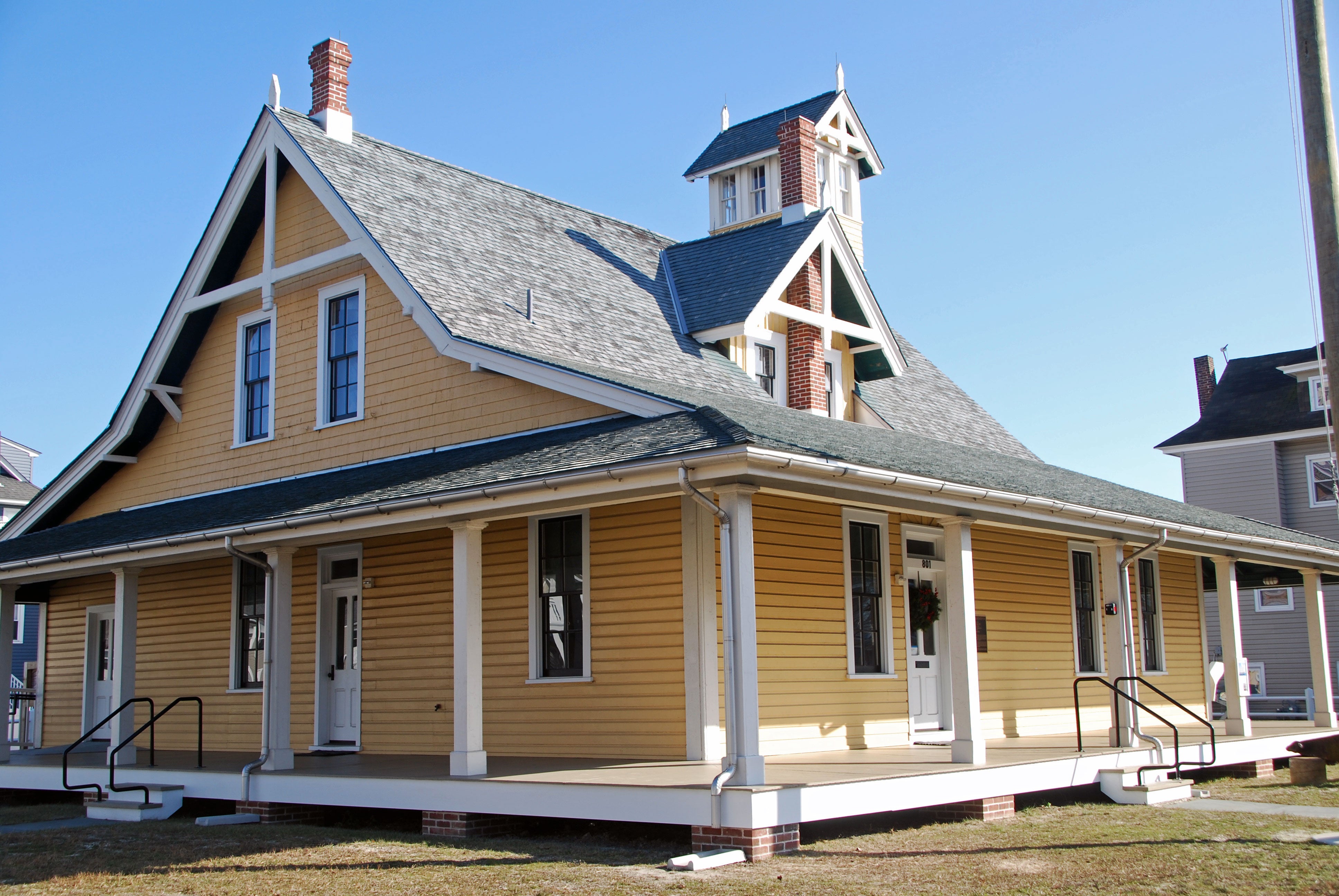
Only one of an earlier generation of lifesaving stations — an 1849 boathouse at Spermaceti Cove — still exists, thanks to preservation by the National Park Service. The stations at 23 of the shore points have been lost altogether, leaving 19 others as museums, community centers and even maintenance facilities, run by state and local authorities or nonprofits. Only three are open to the public as museums.
Sites that no longer host lifesaving stations include Deal, Bay Head and Cedar Creek, while some structures survive at Harvey Cedars, Avalon and Cold Spring, among others, according to the U.S. Lifesaving Heritage Association.
Some were demolished by the Coast Guard, which took over the federal Life Saving Service in 1915, and apparently had little interest in the outmoded trappings of its predecessor organization. Others fell victim to developers who were hungry for coastal property, or to private owners who converted them into shore homes, and, in one case, took it down and rebuilt it elsewhere.
Preserving the past
Their advocates argue that a compelling part of state history will be lost unless more is done to preserve the stations that saved thousands of lives.
“These buildings are the only surviving testimonials to the sacrifices and efforts that many men made to save lives,” said Tim Dring, the immediate past president of the association, a national nonprofit. “There was no retirement or medical benefits and a lot of them did it until they physically couldn’t do the work anymore. They did it because they loved the idea of being able to save lives.”
Dring, who is based in New Jersey, also argued that many shore towns including Stone Harbor, Avalon and Harvey Cedars on Long Beach Island grew up because of the lifesaving stations that were first built there, and so to lose stations in such places would also lose the origins of the towns’ history.
The restored Ocean City station, arguably a national showcase for its kind, contains many historic objects that show the dangers faced by the passengers and crew on board the stricken ships, and by the men who rescued them.
Riding the ‘life car’
The items include a “life car,” a galvanized iron capsule about 11 feet long and less than three feet deep that would carry four or five people lying down while being hauled along a taut rope that was strung between ship and shore. It was built with only pinholes for the occupants to breathe.
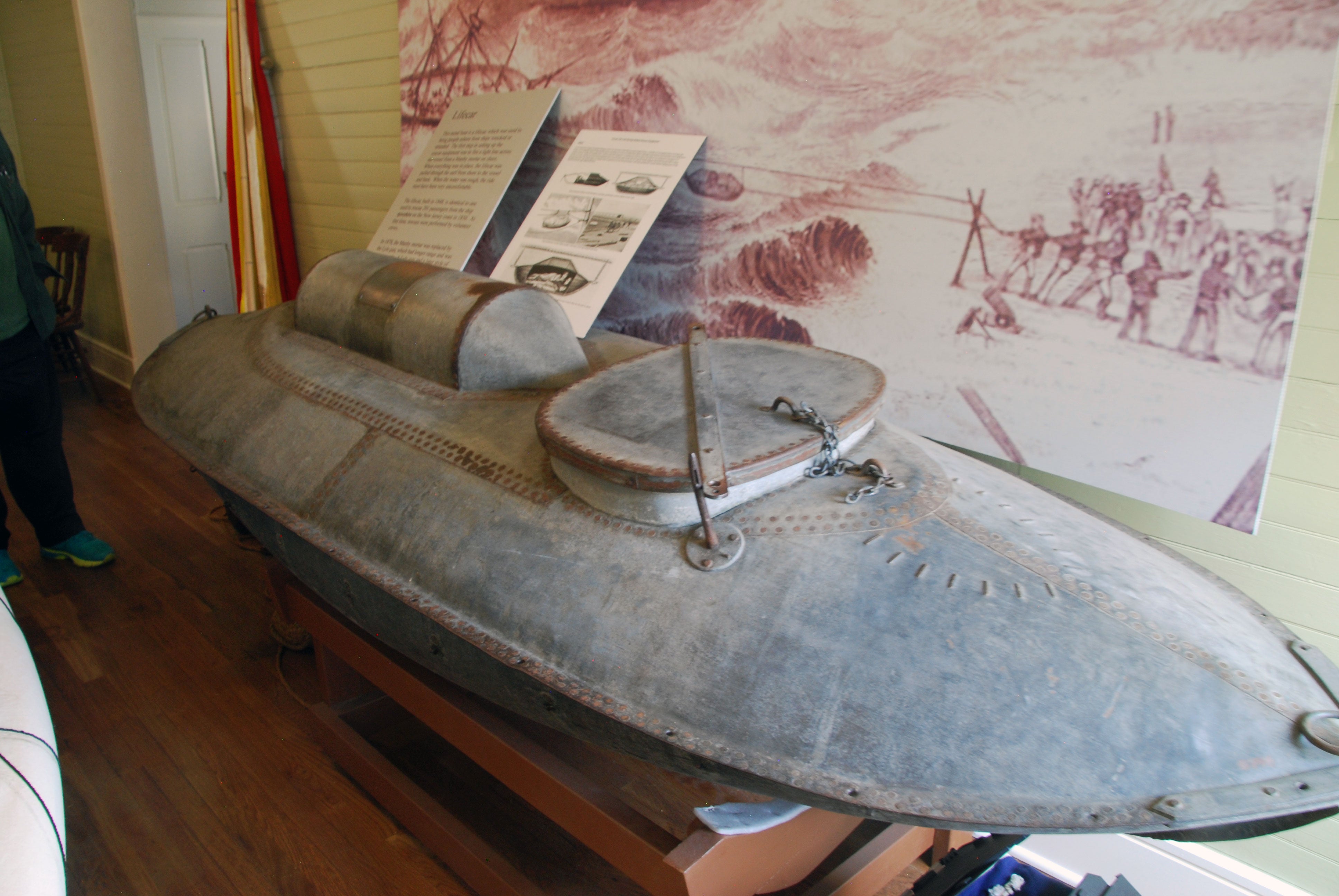
Remarkably, the life car now housed in the Ocean City station saved 201 people from the wreck of the Ayrshire, an immigrant ship from Britain that ran aground off Squan Beach in 1850 while trying to get to the Port of New York in a storm.
The only life lost during the many trips made by the capsule during that rescue was of a man who put his two nieces inside and then decided to ride on top where he fell off and drowned, Dring said.
The Ayrshire disaster was the first time a life car had been used in earnest, and its success in saving so many lives — laborious though it was — convinced the authorities of the value of having manned boathouses, Dring said.
“It served to validate the concept of a boathouse used by volunteers,” he said.
Depending on the weather and the distance from shore, rescuers could opt to launch a surfboat that would carry seven crew members to a wreck and was capable of bringing back a dozen or more passengers.
A 26-foot surfboat replica is housed in the Ocean City station, and contains oars, rowlocks, coils of rope and two hatchets that could be used to cut tangled ropes on the wrecks. It was built in North Carolina two years ago and will be floated off Ocean City in a planned fundraiser next summer.
Rescuers also sometimes opted to use a “breeches buoy” to haul survivors from ship to shore. The technique consisted of a pulley attached to a cut-off pair of breeches that would support one survivor, plus maybe a child, at a time.
The Ocean City crew tried but failed to set up a breeches buoy at the wreck of the Sindia, a cargo ship that ran aground in the middle of the night on the beach at 17th Street in Ocean City in 1901 after a voyage around Cape Horn from China and Japan.
At dawn, the shore crew launched a surfboat, and saved 26 crew members. The only human victim of the wreck was a member of the rescue team who is believed to have suffered a stroke, and later died, said S. John Loeper, president of Lifesaving Station 30.
The local crew typically responded to three or four wrecks a month during the winter and perhaps one a month during the summer, Loeper said. He attributed the heavy demand to the vigorous trade for all kinds of goods up and down the East Coast; to the fact that some mariners had little experience handling ships, especially in heavy weather; and the ships themselves were subject to few safety regulations.
The vessels brought ice and potatoes from Maine, lumber and produce from the southern states, and slate from upstate New York. “It was like the tractor-trailer trucks now,” he said.
Increasing the likelihood of wrecks was that many vessels were built to make quick money rather than to withstand the rigors of Atlantic gales over long periods. “Some of these boats were built quick and dirty; most of them only lasted 10-15 years,” he said.
And even if ships were strongly built, they were no match for the ocean if they were driven aground in a storm, Loeper said.
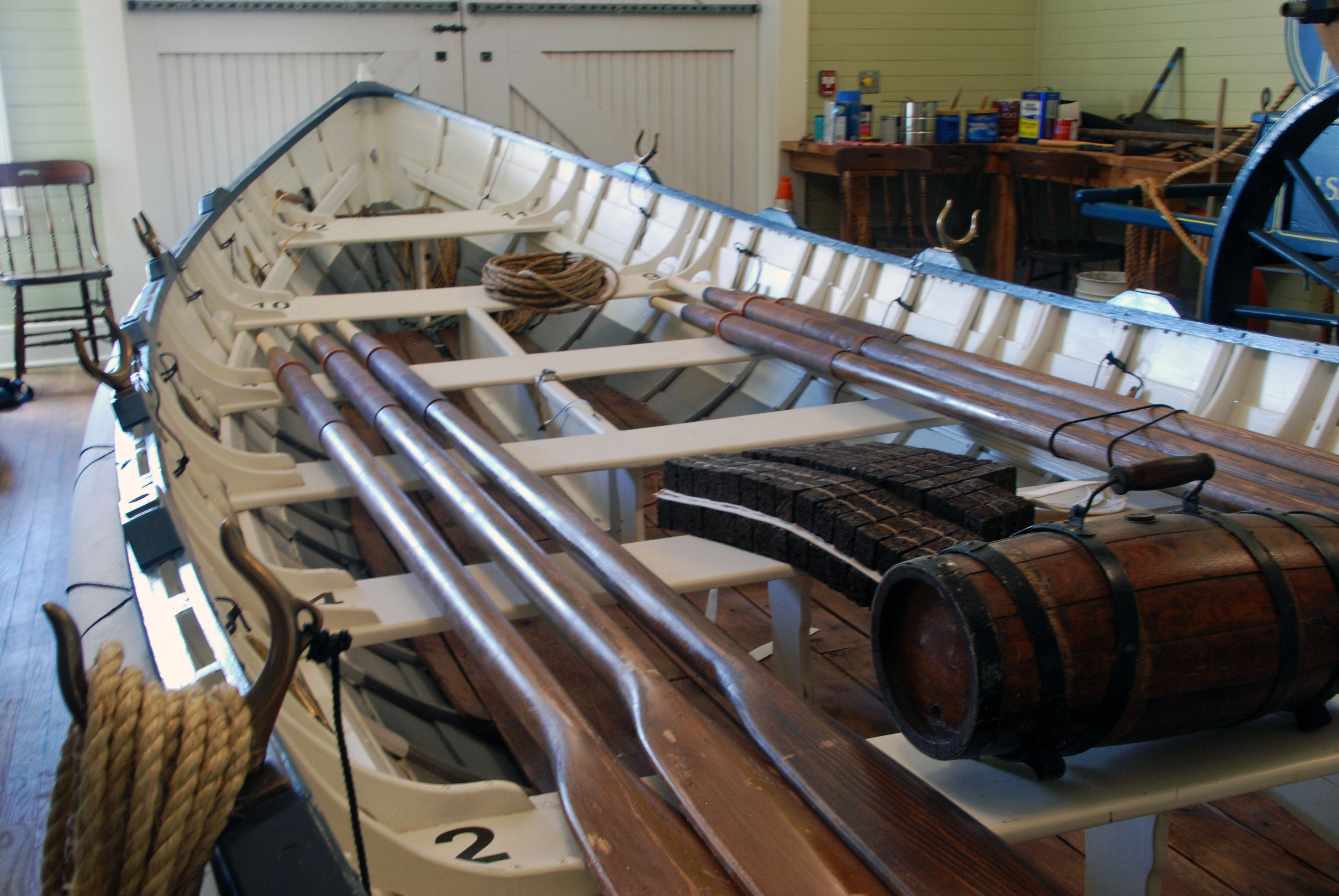
Built for a quick buck
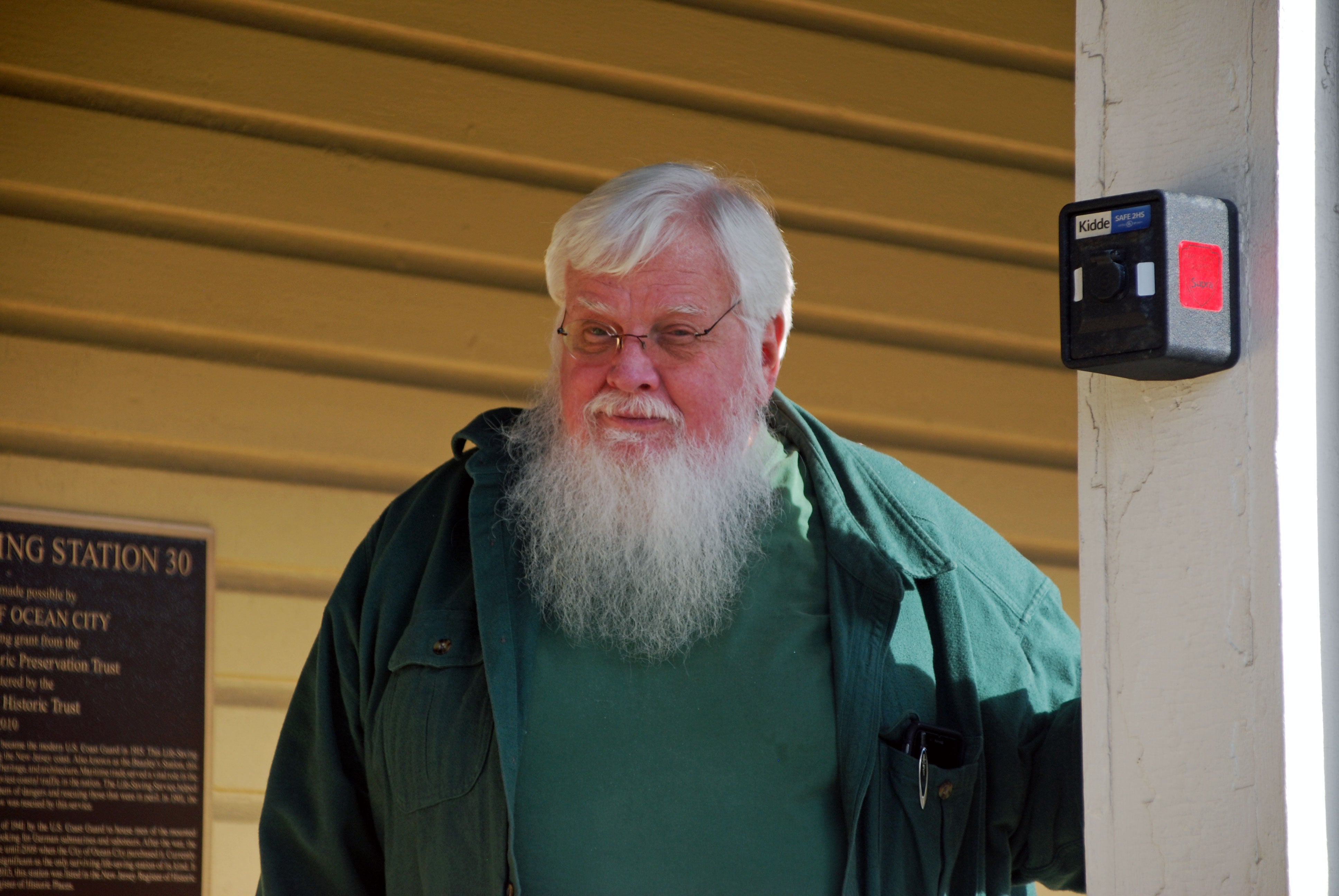
“If this is a wooden ship, every wave that hits it, is like a big sledgehammer. So it wouldn’t take much for one of these wooden ships on a sandbar parallel to the beach to end up being two or three blocks of debris on the beach, tangled up with the bodies of the crew and the cargo. That’s what happened before the Lifesaving Service,” he said.
An early version of the service was started by William August Newell, a New Jersey congressman who witnessed people drowning in a wreck but was unable to save them.
“Newell was walking the beach on a winter’s day and found a schooner that had run aground. Less than 100 yards from shore, he watched 20 people perish,” Loeper said. “There was no way to rescue them.”
Newell persuaded Congress to pass a bill in 1848 that authorized the nation’s first lifesaving station, at Sandy Hook, and led to another 25 being built between Sandy Hook and Cape May over the following two years.
Forerunner of U.S. Coast Guard
The early stations were manned by volunteers who lived in the towns surrounding the stations, rather than on the premises, as they did later. Recognizing that the early version of the stations limited the response time, and stung by a number of high-profile wrecks, Congress then created a professionally run U.S. Lifesaving Service, which operated from 1871 to 1915 — when it was succeeded by the U.S. Coast Guard.
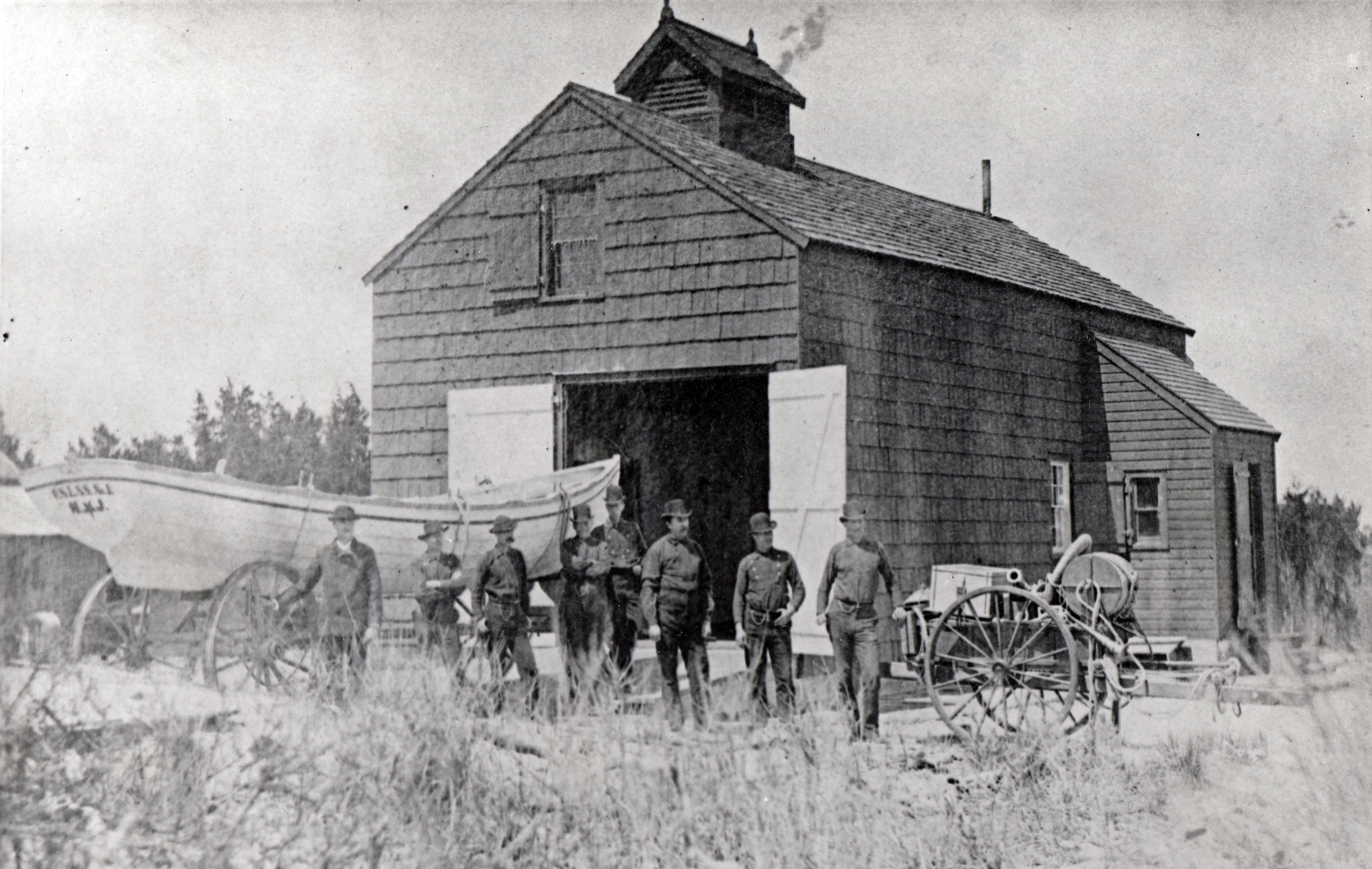
The strengthened service paid “surfmen” to live in stations like that at Ocean City, under the command of a “keeper” who was responsible for training them to respond quickly and professionally to wrecks. The formalizing of the service resulted in at least 30,000 lives being saved from wrecks off New Jersey between 1871 and 1915, compared with “a few thousand” in the first 12 years, Dring estimated.
The surfmen enjoyed high respect from their communities because of the dangers they faced in their job, but they were paid only around $50 a month, had to live apart from their families in the stations and even had to provide their own food by hunting or growing vegetables. That self-reliance is shown by various hunting implements and small boats preserved in the Ocean City station. And in another nod to authenticity, the station plans to create a vegetable garden in its yard in the coming year.
Gold medal for heroism
The stories of bravery include that of William Chadwick, keeper of a lifesaving station at Green Island off Long Beach Island, who was awarded a Congressional Gold Medal for heroism during a rescue after saving all but two crew members from a wreck near Mantoloking in February 1880.
The George Taulane, an American schooner, ran aground on a sandbar about two miles south of the Mantoloking station, and dragged its anchors, forcing the lifesaving crew to follow the ship south through three miles of heavy surf and soft sand for about six hours, according to a biography of Chadwick by Dring.
Now, in recognition of his bravery, the U.S. Coastguard is preparing to name a new cutter after Chadwick.
His great-great grandson, Morton Bell, said he is extremely proud of his ancestor.
“What they had to do to rescue people is just overwhelming,” said Bell, 75, a resident of Wallingford, Pa., who spent his childhood summers at the Jersey Shore. “It’s part of the history of the Jersey Shore, the work that these people did — they were heroic efforts. I think that’s something that not many people know about, and it’s preserving our history.”
At Ocean City, volunteers and paid contractors have spent the past decade recreating the 19th century station down to the last detail. Every window is where it originally was, thanks to 480 photographs from the heritage association, and the expertise of a historic architect, Loeper said.
The building was purchased in about 2010 by the City of Ocean City for $780,000 from a developer who wanted to tear it down and build three duplexes. The renovations so far have been funded with $1.4 million in city and federal funds.
In the dining room, the team removed a fireplace that had been built by one of a string of private owners after 1944 when it was purchased from the Coast Guard. In that room, today’s visitors can see a plain wooden box containing books that was rotated between stations with fresh reading material each month. “You won’t find one of those boxes but if you do find one, it’s going to be $5,000,” Loeper said.
And the kitchen contains a coal-burning stove, a deep porcelain sink that appears in a blueprint of the original room and a telephone that could receive calls from field telephones on the beach so that the men in the house would know at once if there was a wreck.
It’s been a challenge to find authentic items because so many of them were destroyed when the Coast Guard took over the station.
“The men taking them over didn’t want any of the equipment from the lifesaving service. They took all this stuff outside and burned it in a pile,” Loeper said.
“You can look for a long time to find items. We’ve been doing it for 10 years and we still don’t have everything we want. We have a full inventory of this building from 1902 but try to find it: That’s another story.”
Even if the fine details of his project are not all that Loeper would want, he’s confident that the restoration will open visitors’ eyes to a piece of New Jersey history that they might not have previously considered — especially when the second floor of the building, where the surfmen slept, is renovated starting this winter, at a cost of $200,000 from Ocean City’s capital budget.
And he hopes that the project will build support for the preservation of other lifesaving stations by increasing public understanding.
“If they are not preserved now, this segment of history will never be known,” he said. “I always tell people who visit here: ‘When you leave, you will know more than the next 5,000 people at a cocktail party.’”
WHYY is your source for fact-based, in-depth journalism and information. As a nonprofit organization, we rely on financial support from readers like you. Please give today.


